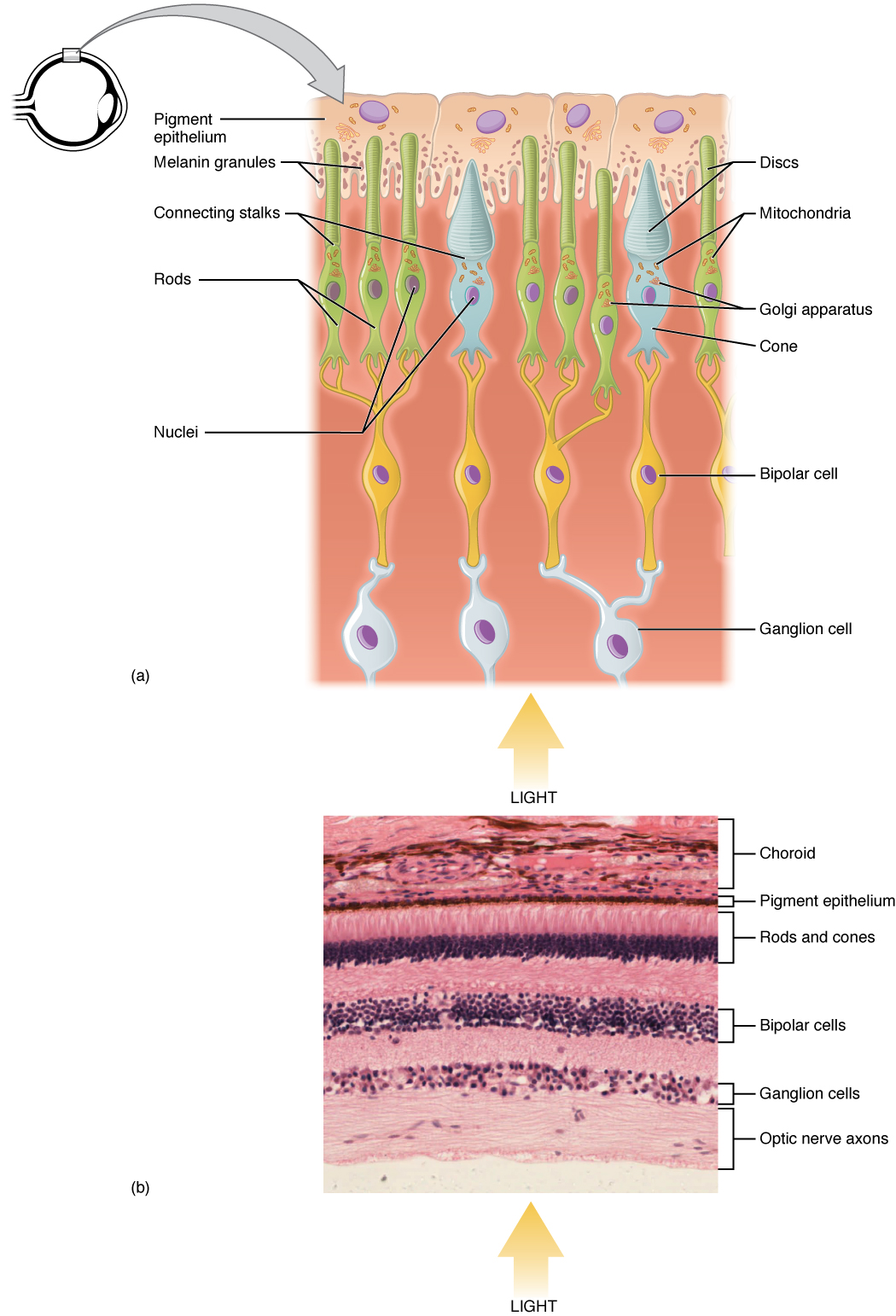Light and Eyeballs
80
Learning Objectives
Being able to describe the basic properties of light.
Know what factors determine the color of an object.
Basic Properties of Light
We define light as the electromagnetic rays that interact with the photoreceptors in our eyes. A honeybee would have a different definition of light, because it can see ultraviolet rays (200-400nm), where we just think of UV as a sunburn hazard.
Light is a form of electromagnetic radiation. Electromagnetic radiation is sinusoidal electric and magnetic fields that are oriented at right angles (orthogonal) to each other, out of phase (one gets large while the other gets small, then they trade off), and can propagate through a vacuum. Like sound, all electromagnetic radiation travels at the same speed (300 million meters per second in a vacuum), and speed = wavelength x frequency. These waves come in a wide variety of wavelengths called the electromagnetic spectrum. The portion of the electromagnetic spectrum that we call light is the portion that has wavelengths between 400 and 700 nanometers.
One property of light is that it is quantized, which means it can only take on specific values. Even though light propagates as a continuous dance between electric and magnetic fields, the energy is quantized—a photon is the smallest amount of light that can be generated or transmitted.
Factors that Determine Color
Light falling on the retina causes chemical changes to pigment molecules in the photoreceptors, ultimately leading to a change in the activity of the RGCs (retinal ganglion cells). Photoreceptor cells have two parts, the inner segment and the outer segment. The inner segment contains the nucleus and other common organelles of a cell, whereas the outer segment is a specialized region in which photoreception takes place.
There are two types of photoreceptors—rods and cones—which differ in the shape of their outer segment. Another difference between rods and cones is the light levels. Rods are in control of vision at night and cones take the role of vision during the day. Not only that, but rods have lower visual sharpness and cones have higher visual sharpness. This is because rods have a sensitivity to light intensity that is higher compared to cones. In addition to that, there are three cone photopigments, called opsins, which are each sensitive to a particular wavelength of light. The wavelength of visible light determines its color. The pigments in human eyes are specialized in perceiving three different primary colors: red, green, and blue. The color of an object is determined by the wavelength that the object reflects and the color of the light source.

CC LICENSED CONTENT, SHARED PREVIOUSLY
OpenStax, Anatomy and Physiology Chapter 14.1 Sensory Perception
Provided by: Rice University.
Access for free at https://openstax.org/books/anatomy-and-physiology/pages/14-1-sensory-perception
License: CC-BY 4.0
Adapted by: Nura Ahmed
Cheryl Olman PSY 3031 Detailed Outline
Provided by: University of Minnesota
Download for free at http://vision.psych.umn.edu/users/caolman/courses/PSY3031/
License of original source: CC Attribution 4.0
Adapted by: Nura Ahmed and Victoria Manchanthasouk
Schwiegerling, J. (2004). Field Guide to Visual and Ophthalmic Optics,
SPIE Press, Bellingham WA.
Retrieved from: https://spie.org/publications/fg04_p04_photoreceptors?SSO=1
CC BY-NC-SA
Adapted by: Victoria Manchanthasouk

